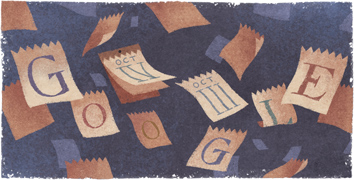
Tuesday’s Google Doodle celebrates the 434th anniversary of the Gregorian calendar, which was introduced on Oct. 4, 1582, by Pope Gregory XIII.
The new calendar, introduced during the Renaissance, replaced the Roman Calendar that Julius Caesar had reformed in around 46 B.C. Before Caesar realigned the calendar, a Roman year had been 10 days shorter than a current year, and divided into lunar months. In order to keep the year in tune with the seasons, an extra month would be tacked on occasionally.
Caesar noticed that Egyptians used a calendar based on the sun rather than the moon. So, in consultation with the Alexandrian astronomer Sosigenes, he decided to create his own new system, hoping to solve the problem of the drifting seasons.
Each solar year in Caesar’s calendar became 365 days and six hours long, and the shortest month would get an extra day every four years to account for the annual accumulation of a quarter of a day. He made that first year 445 days long, so that the transition between the old Roman calendar and the new one would work.
Get your history fix in one place: sign up for the weekly TIME History newsletter
However, Caesar’s estimation was slightly off—by 11 minutes and 14 seconds. By 1582, those 11 minutes per year had accumulated to a 10 day discrepancy. This discrepancy interfered with calculating liturgical dates like Easter, which is set by the moon, so Pope Gregory XIII issued a Papal Bull to fix the problem.
As a result, in the year 1582, Oct. 4 was followed directly by Oct. 15, and the time in between was erased on the calendar and declared non-existent by the pope.
The pontiff also set up a convoluted new scheme to prevent such a maneuver from being necessary in the future: every four year there would be a leap year, unless that year happened to be the beginning of a new century—except for every 400 years, when we would keep the extra day (“the exception to the exception,” as TIME once called it).
First implemented by Italy, Spain, Poland and Portugal in 1582, the Gregorian calendar is today’s most widely used system. Turkey was the last country to officially switch to the new system, which it did on Jan. 1, 1927.
More Must-Reads from TIME
- Why Trump’s Message Worked on Latino Men
- What Trump’s Win Could Mean for Housing
- The 100 Must-Read Books of 2024
- Sleep Doctors Share the 1 Tip That’s Changed Their Lives
- Column: Let’s Bring Back Romance
- What It’s Like to Have Long COVID As a Kid
- FX’s Say Nothing Is the Must-Watch Political Thriller of 2024
- Merle Bombardieri Is Helping People Make the Baby Decision
Write to Kate Samuelson at kate.samuelson@time.com